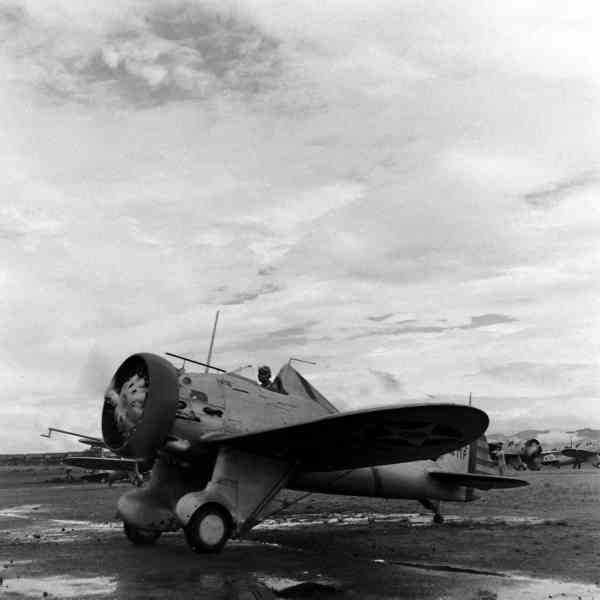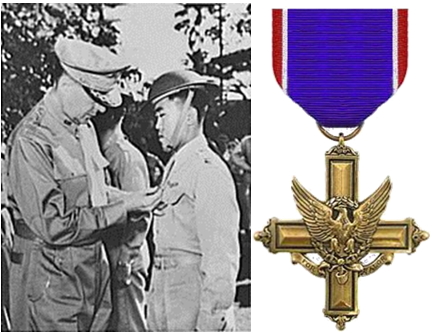Capt. Jesus A. Villamor, 6th Pursuit Squadron Commander
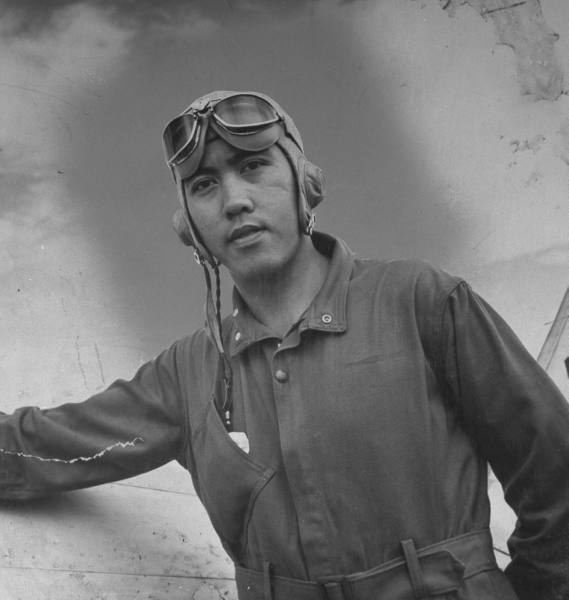
Capt. Jesus A. Villamor, 6th Pursuit Squadron. Philippine Army Air Corp. (Carl Mydans Photo for Life Magazine. 1941)
The fourth and youngest son of Justice Ignacio Villamor and Doña Maria Antonio, Villamor was one of seven children.
During summer, he and his family went to Baguio and stayed in one of the government houses on Hogan’s Alley, which are now assigned to Justice of Court of Appeals, just below Cabinet Hill along Leonard Wood Road. One of his playmates during this time was Roberto Lim, son of Brigadier General Vicente Lim.
Jess (as one of his friends would call him), at the age of 14 to 15, was already an aviation fan. After finishing High School in De La Salle, He Wanted so much to join the Air Corp that he enrolled and learned how to fly in the civilian flying school in Grace Park that was located next to La Loma cemetery. Roberto Lim took his first airplane ride with Jess in a Stearman plane. Since he could not get accepted by the American military air corps as an officer without a degree, He went back to de La Salle College (now DLSU-Manila) in Manila, and earned a degree in commerce. After Graduation, he re-enrolled in the flying school and earned his Flight Instructor’s License. He also signed Roberto Lim’s first civilian license.
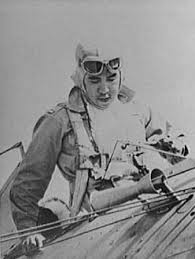
He joined the Philippine Army Air Corps (PAAC) Flying School in 1936 and was sent to Randolph Field and Kelly Field in the United States for training, and after three years, began flying B-17’s as part of the US Air Force’s Strategic Bombing Squadron.
Upon his return to the Philippines, He was made Captain of the emerging Philippine Air Corp. He was assigned to lead the 6th Pursuit Squadron (now 6th Tactical Fighter Squadron) shortly before the Japanese invasion of the Philippines in December 1941.
On the ninth of December, Villamor was ordered to Zablan Field near Manila. The next day, The tenth of December, the Japanese Air armada hit Zablan. Villamor and six others responded to the attack.
In the skies above Zablan and Batangas Fields, against Japanese Zeros, his squadron of P-26 fighters engaged the enemy. Despite the disadvantage, Villamor and his squadron was credited with four kills- one Mitsubishi G3M bomber and three Mitsubishi A6M Zero. Two of them were personally shot down by Villamor himself.
A Curtis P26 Peashooter acquired by the Philippine Army Air Corp. Life. Mydans. 1941.
For leading his squadron and for his two confirmed kills, Villamor was twice cited by the United States Army for bravery, receiving the Distinguished Service Cross for actions on December 10, 1941 and an Oak Leaf Cluster in lieu of a second award of the Distinguished Service Cross (DSC) for actions on December 12, 1941 Viillamor is the only Filipino to receive the DSC twice.
After his squadron was destroyed, Villamor continued his war against the Japanese as an intelligence officer. Having escaped the fall of the Philippine Islands, volunteering, Villamor received orders to return to the Philippines. Promoted to Major, Villamor served as a commander in the Allied Intelligence Bureau. On December 27, 1942, Villamor was part of a team inserted by the submarine USS Gudgeon (SS-211) into the Philippines, making contact with Roy Bell on Negros. Establishing a chain of direct communication from the Philippines with General Douglas MacArthur in Australia, he coordinated the activities of various guerrilla movements in Luzon, Mindanao and the Visayas.
Completing his mission Villamor returned to Australia. Villamor acted as the “clearing house” for information, which helped the United States Armed Forces in the Far East (USAFFE) to map out a strategy to liberate the Philippines.
After World War II, Villamor served with the Military Assistance Advisory Group in State of Vietnam during 1951 and 1952, and once again in 1955.
For his bravery as a pilot and ingenuity as an intelligence officer, President Ramón Magsaysay awarded Lieutenant Col. Villamor the Medal of Valor, the highest Philippine military bravery decoration, on January 21, 1954. The Philippine Air Force’s principal facility in Metro Manila which was first known as Nichols Field, then later Nichols Air Base, was renamed Col. Jesús Villamor Air Base in his honor.
Awards and Honors
The Distinguished Service Cross, section 3742, title 10, United States Code (10 USC 3742), was established by Act of Congress 9 July 1918 (amended by act of 25 July 1963).
The Distinguished Service Cross is awarded to a person who while serving in any capacity with the Army, distinguished himself or herself by extraordinary heroism not justifying the award of a Medal of Honor; while engaged in an action against an enemy of the United States; while engaged in military operations involving conflict with an opposing or foreign force; or while serving with friendly foreign forces engaged in an armed conflict against an opposing Armed Force in which the United States is not a belligerent party. The act or acts of heroism must have been so notable and have involved risk of life so extraordinary as to set the individual apart from his or her comrades.
General Douglas MacArthur (left) is shown pinning a Distinguished Service Cross on Captain Jesús A. Villamor of the Philippine Army Air Corps, for heroism in the air. (Carl Mydans phot for Life)
Awarded for actions during World War II (Citation for Villamor’s first DSC).
Captain (Air Corps) Jesus A. Villamor (ASN: 0-888072), United States Army Air Forces, was awarded the Distinguished Service Cross for extraordinary heroism in connection with military operations against an armed enemy while serving as Pilot of a P-26 Fighter Airplane in the 6th Pursuit Squadron, Philippine Army Air Corps, attached to the FAR EAST Air Force, in aerial combat against enemy Japanese forces on 10 December 1941, during an air mission over Air Batangas, Philippine Islands. Captain Villamor led six ancient P-26’s in interception of some fifty-four attacking bombers and the harassing tactics of the Filipino flyers minimized damage to their Batangas field. Captain Villamor’s unquestionable valor in aerial combat is in keeping with the highest traditions of the military service and reflects great credit upon himself, the Philippine Army Air Corps, and the United States Army Air Forces.
General Orders: Headquarters, U.S. Army Forces in the Far East, General Orders No. 48 (1941) Action Date: 10-Dec-41
Service: Army Air Forces
Rank: Captain
Company: 6th Pursuit Squadron
Division: Philippine Army Air Corps
Awarded for actions during World War II (2nd DSC for Villamor).
Captain (Air Corps) Jesus A. Villamor (ASN: 0-888072), United States Army Air Forces, was awarded a Bronze Oak Leaf Cluster in lieu of a Second Award of the Distinguished Service Cross for extraordinary heroism in connection with military operations against an armed enemy while serving as Pilot of a P-26 Fighter Airplane in the 6th Pursuit Squadron, Philippine Army Air Corps, attached to the FAR EAST Air Force, in aerial combat against enemy forces on 12 December 1941. In defense of the Philippine Islands against Japanese aerial attack, on this date Captain Villamor engaged and shot down one enemy fighter. Captain Villamor’s unquestionable valor in aerial combat is in keeping with the highest traditions of the military service and reflects great credit upon himself, the Philippine Army Air Corps, and the United States Army Air Forces.
General Orders: Headquarters, U.S. Army Forces in the Far East, General Orders No. 48 (1941)
Action Date: 12-Dec-41
Service: Army Air Forces Rank: Captain
Company: 6th Pursuit Squadron
Division: Philippine Army Air Corps
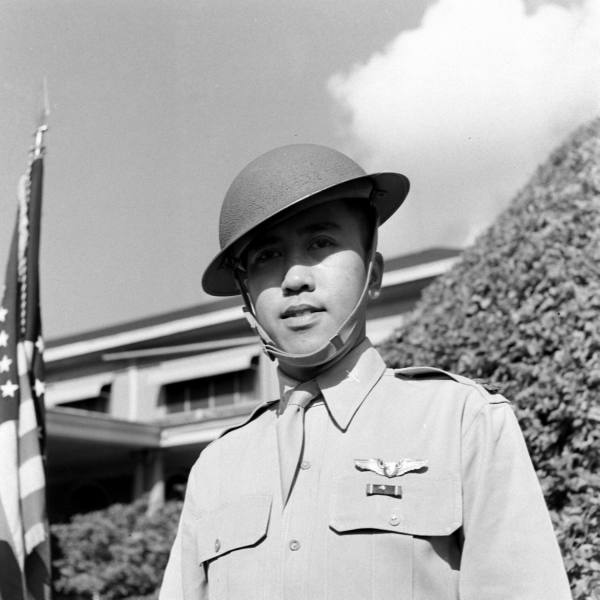
Lt. Villamor (Carl Mydans Photo for Life Magazine. 1941)
For his bravery as a pilot and ingenuity as an intelligence officer, President Ramón Magsaysay awarded Lieutenant Col. Villamor the Medal of Valor, the highest Philippine military bravery decoration, on January 21, 1954. The Philippine Air Force’s principal facility in Metro Manila which was first known as Nichols Field, then later Nichols Air Base, was renamed Col. Jesús Villamor Air Base in his honor.

